Helping Community Cats in Sarnia
Introducing our Trap-Neuter-Return (TNR) Program
At the Sarnia & District Humane Society, our mission has always been to protect and care for animals. For many cats, that means adoption into loving homes. But not every cat is suited to life indoors. Some cats are community cats — unsocialized to people and unable to thrive in a home environment.
That’s where Trap-Neuter-Return (TNR), also called Shelter-Neuter-Return (SNR), comes in. It’s the most humane and effective way to care for these cats, reduce suffering, and stabilize their population.
What is TNR?
TNR is a simple, humane process:
1. Trap – Community cats are safely and humanely trapped.
2. Neuter/Spay & Treat – At our shelter, cats receive a full health check. They are:
– Spayed or neutered
– Vaccinated against rabies and FVRCP
– Treated for fleas and worms
– Microchipped for identification
– Ear-tipped (a small, painless mark on the ear to show they’ve been sterilized)
3. Return – Healthy cats are returned to the outdoor location where they were found — the place they know as home.
Kittens and cats who show they are socialized are placed into our adoption program.

https://www.operationhood.org/tnr1.html
Why TNR Works
The humane, effective solution for community cats.
For decades, communities have struggled with what to do about outdoor cats. Traditional approaches — like trapping and removing cats — haven’t worked. New cats simply move in to take their place, and the cycle starts all over again.
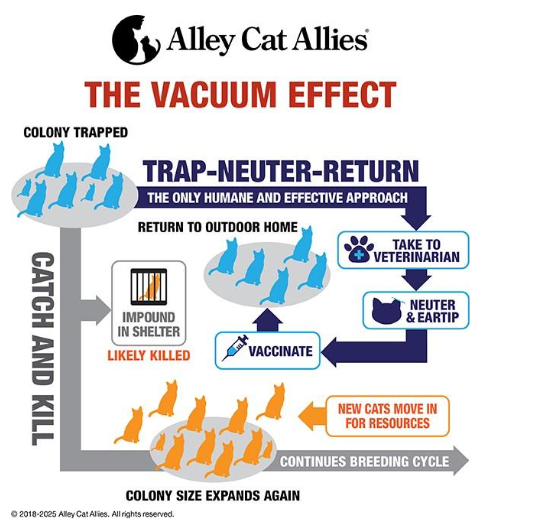
https://www.alleycat.org/resources/the-vacuum-effect-why-catch-and-kill-doesnt-work/
Trap-Neuter-Return changes that story. It’s the only proven method to stabilize community cat populations and improve the lives of both cats and people.
Healthier Cats: No more endless litters. Sterilized cats are calmer, quieter, and less likely to fight, spray, or roam. Vaccinations and parasite treatments protect their health.
Fewer Nuisance Behaviors: The behaviors that frustrate people — yowling, fighting, spraying — decrease dramatically after cats are sterilized.
Stable Populations, Fewer Cats Over Time: Removing cats triggers the vacuum effect — new cats simply move in. With TNR, cats stay in place but stop reproducing, so populations stabilize and decline naturally.
Benefits for Everyone: Cats live healthier lives, shelters face less overcrowding, neighbors see fewer nuisances, and wildlife is better protected as cat numbers decline.
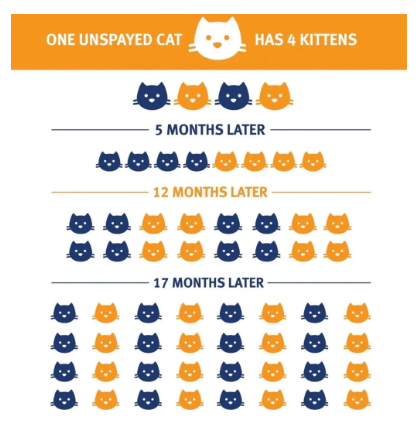
https://www.fosocas.org/tnr-trap-neuter-return/
Our Program in Sarnia
Caring for every cat, the humane way.
At the Sarnia & District Humane Society, we are committed to the well-being of all cats — whether they are adoptable pets or unsocialized community cats.
When a stray or feral cat enters our shelter:
1. Intake & Health Check – Each cat is assessed by our veterinary team.
2. Full Veterinary Care – Cats in the program receive:
– Spay or neuter surgery
– Vaccinations for Rabies and FVRCP
– Flea and worm treatment
– Microchipping
– Ear-tipping
3. Recovery – Cats recover safely in the shelter under veterinary supervision.
4. Placement Decision –
– Adoptable cats (friendly adults or kittens) enter our adoption program.
– Unsocialized community cats are returned to their outdoor homes, healthy and unable to reproduce.
Only healthy cats are returned. Cats who are sick or injured are treated and, when appropriate, placed in adoption or foster care.
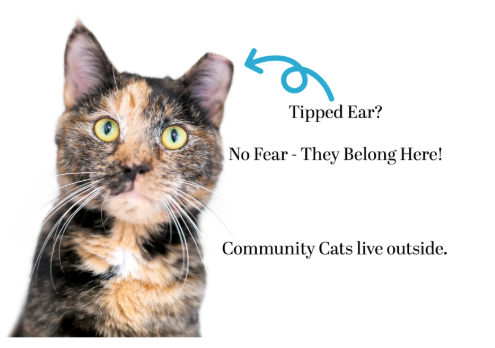
https://www.sfadopt.com/resources/community-cats-tnr-
Frequently Asked Questions About TNR
We know you may have questions about why the Sarnia Humane Society is returning some cats outdoors. Here are answers to the most common concerns we hear.
Isn’t it cruel to put cats back outside?
It may feel counterintuitive, but putting unsocialized cats back outdoors is actually the most humane choice. Feral cats are not like pet cats — they have grown up without close contact with humans and see people as a threat. Forcing them indoors causes extreme stress and can even lead to illness from that stress.
With TNR, cats are given the best possible chance at a healthy life. They are spayed or neutered, vaccinated, treated for parasites, and ear-tipped so they can be recognized as cared-for cats. They are then returned to the outdoor homes they already know and understand.
Research shows that feral cats can live long, healthy lives outdoors when sterilized and vaccinated. In fact, it is far kinder to return them than to confine or euthanize them.
Why not just remove the cats?
Removing cats doesn’t solve the problem. Decades of experience and research show that when cats are taken away, new cats quickly move in to take advantage of the same food and shelter. This is called the “vacuum effect.”
Imagine taking a sponge out of a puddle — more water rushes in to fill the space. It’s the same with cats: if there’s a food source and shelter, new cats will replace the ones removed. Communities that rely on removal and euthanasia often find themselves in a never-ending cycle of catching and killing, without reducing the overall cat population.
TNR breaks this cycle. Once cats are sterilized and returned, the colony stabilizes. No new kittens are born, nuisance behaviors decrease, and over time the population goes down naturally.
What about birds and wildlife?
This is a common concern. Cats do hunt, but removing them entirely doesn’t protect wildlife — because new cats will simply move into the vacant territory. That’s the vacuum effect at work again.
TNR is the only proven way to reduce the number of cats outdoors over time. Fewer cats means fewer potential predators. It’s a gradual but lasting solution. In fact, several studies and wildlife groups now acknowledge that sterilization programs are the most effective way to protect both cats and wildlife long-term.
Why not relocate the cats?
Relocation sounds like a solution, but it is very risky for the cats and often fails. Cats are territorial animals — they know where to find food, shelter, and safety in their established home range. If you move them to a new place, they may try to return, get lost, or get into fights with resident cats in the new area. Many do not survive relocation.
Experts, including Alley Cat Allies and the Neighborhood Cats Project, stress that relocation should only be done as a last resort — such as if a building is being demolished. Otherwise, the kindest and safest choice is to return the cats to the territory they already know.
Will the cats just keep multiplying?
No. This is the key benefit of TNR. Once cats are spayed or neutered, they no longer reproduce. That means no more kittens being born outdoors.
Within a few breeding cycles, you start to see real results: fewer kittens in the community, a stable colony size, and a gradual population decline. In fact, studies show that sterilized colonies shrink over time — while unmanaged colonies can grow rapidly.
Do these cats get medical care?
Yes. Every cat in our TNR/SNR program receives:
• Spay or neuter surgery
• Rabies and FVRCP vaccinations
• Flea and worm treatment
• A microchip for identification
• An ear-tip for easy recognition outdoors
This means cats are healthier, safer from disease, and easier for the community to identify as already cared for. Only cats who are healthy enough are returned outdoors. Cats who are sick or injured are treated, and if appropriate, placed into adoption or foster care.
Can feral cats be adopted?
Adult feral cats cannot adjust to indoor life. They have grown up without human socialization and see people as a threat. Trying to turn a feral cat into a pet is extremely stressful for the cat and often dangerous for people.
Think of it this way: you wouldn’t bring a raccoon into your house and try to tame it. A feral cat is very similar — it’s essentially a wild animal that has learned to survive outdoors. Like wildlife, feral cats deserve respect and care in their natural environment, not forced captivity.
That’s why our adoption program focuses on kittens and friendly strays, while adult feral cats are cared for through TNR and returned to the outdoor homes they know.
What if I don’t want cats on my property?
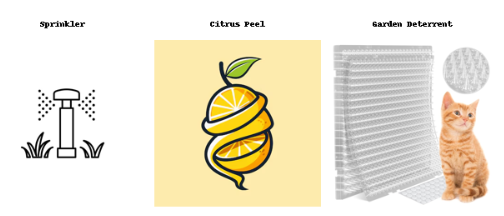
We understand that not everyone wants cats in their yard. In surveys across North America nearly 80 % of people preferred TNR over euthanasia when asked how to manage community cats.
Fortunately, there are safe, humane ways to keep them away:
- Sprinklers: Motion-activated sprinklers give cats a harmless spray of water.
- Citrus: Cats dislike the smell of citrus peels or sprays.
- Garden covers: Mesh, chicken wire, or spike mats can discourage digging in gardens.
These deterrents are easy, inexpensive, and effective. For more ideas, visit Alley Cat Allies: How to Live with Cats in Your Neighborhood.
How will this help the community?
- TNR benefits everyone:
For cats: Longer, healthier lives outdoors, no more endless litters, less stress, and fewer fights. - For neighbors: Less noise, spraying, and nuisance behavior.
- For shelters: Fewer kittens coming in, meaning more resources for adoptable pets.
- For wildlife: Cat numbers gradually decrease, protecting birds and small animals.
TNR works. It improves cat welfare, reduces nuisance behaviors, protects wildlife by lowering cat numbers over time, and creates a healthier balance between people and animals. Most importantly, it reflects our mission: to care for all animals in our community.
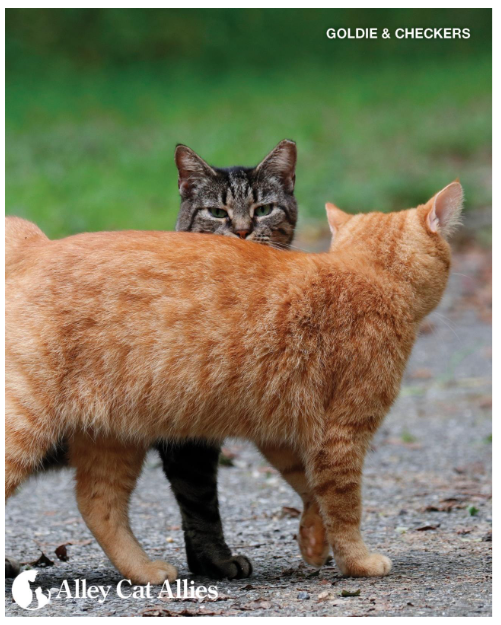
Learn More
- Alley Cat Allies: Why TNR Works – https://www.alleycat.org/resources/why-trap-neuter-return-feral-cats-the-case-for-tnr/
- Neighborhood Cats Handbook – https://www.neighborhoodcats.org/how-to-tnr/handbook
- How to Live with Cats in Your Neighborhood – https://www.alleycat.org/resources/how-to-live-with-cats-in-your-neighborhood/
- Van Patter, L., Flockhart, T., Coe, J., Berke, O., Goller, R., Hovorka, A., & Bateman, S. (2019). Perceptions of community cats and preferences for their management in Guelph, Ontario. Part I: a quantitative analysis. The Canadian Veterinary Journal, 60(1), 41.
https://pubmed.ncbi.nlm.nih.gov/30651649/
